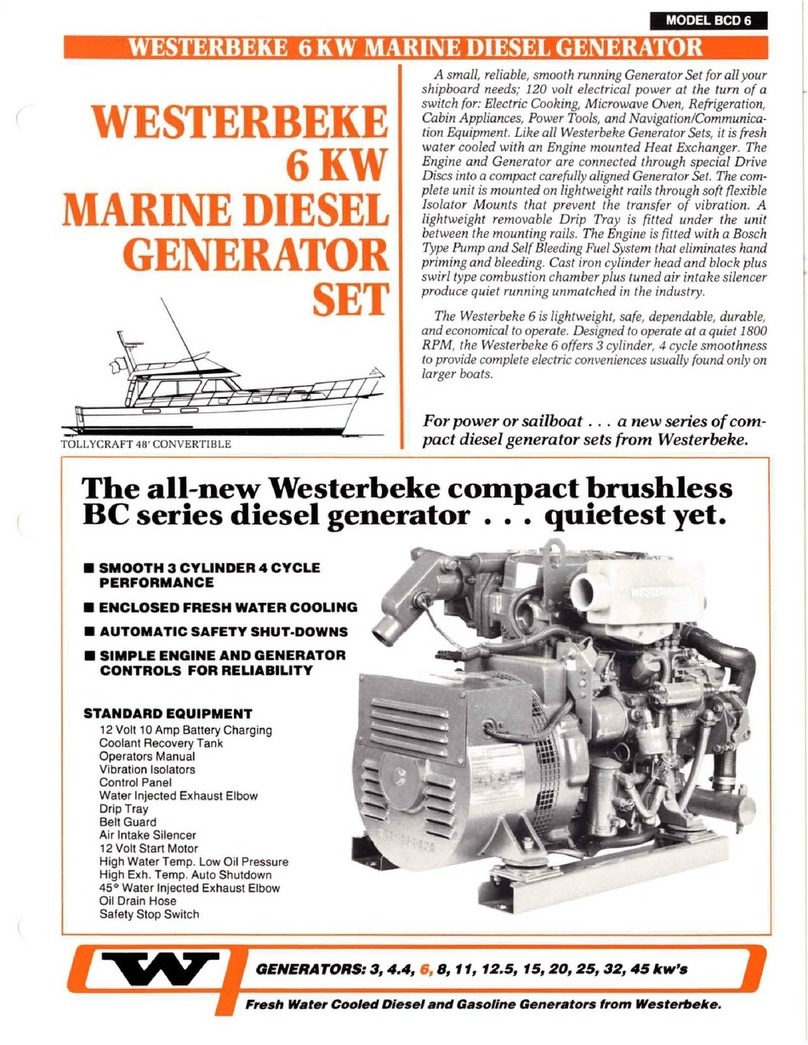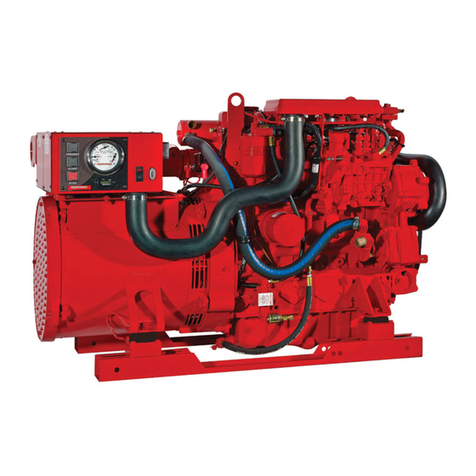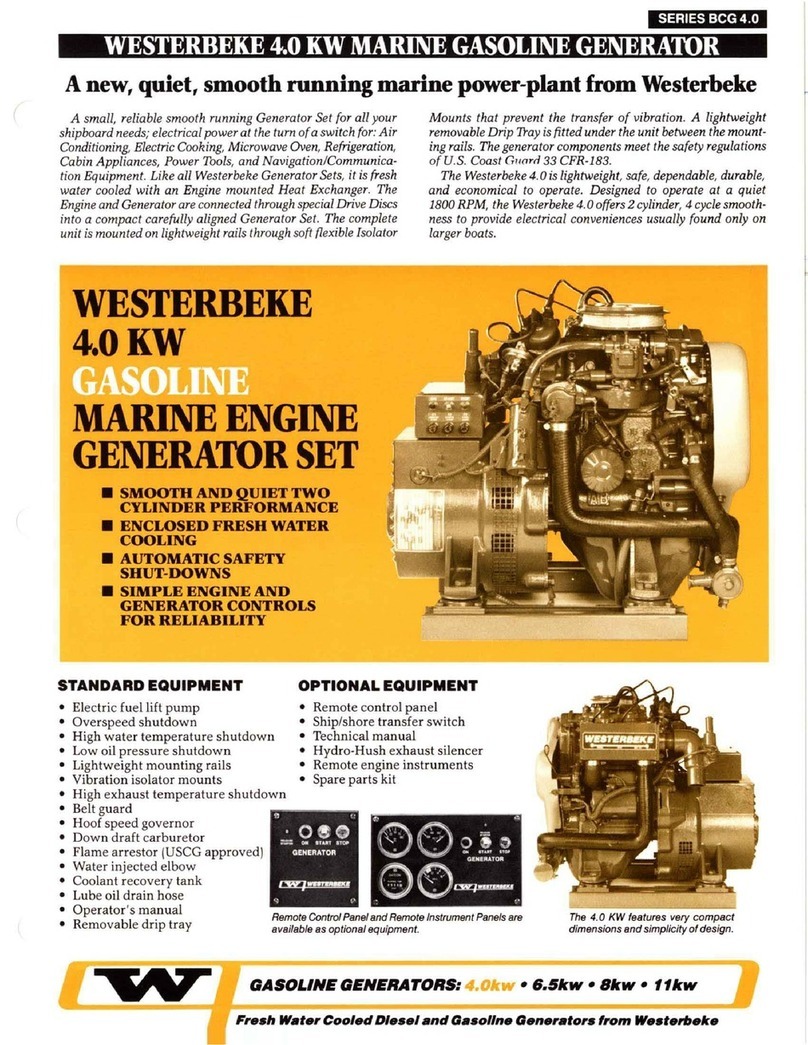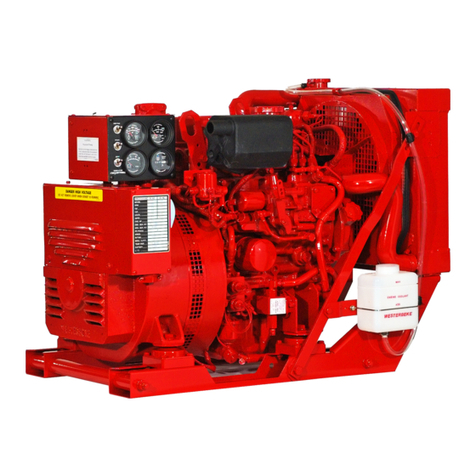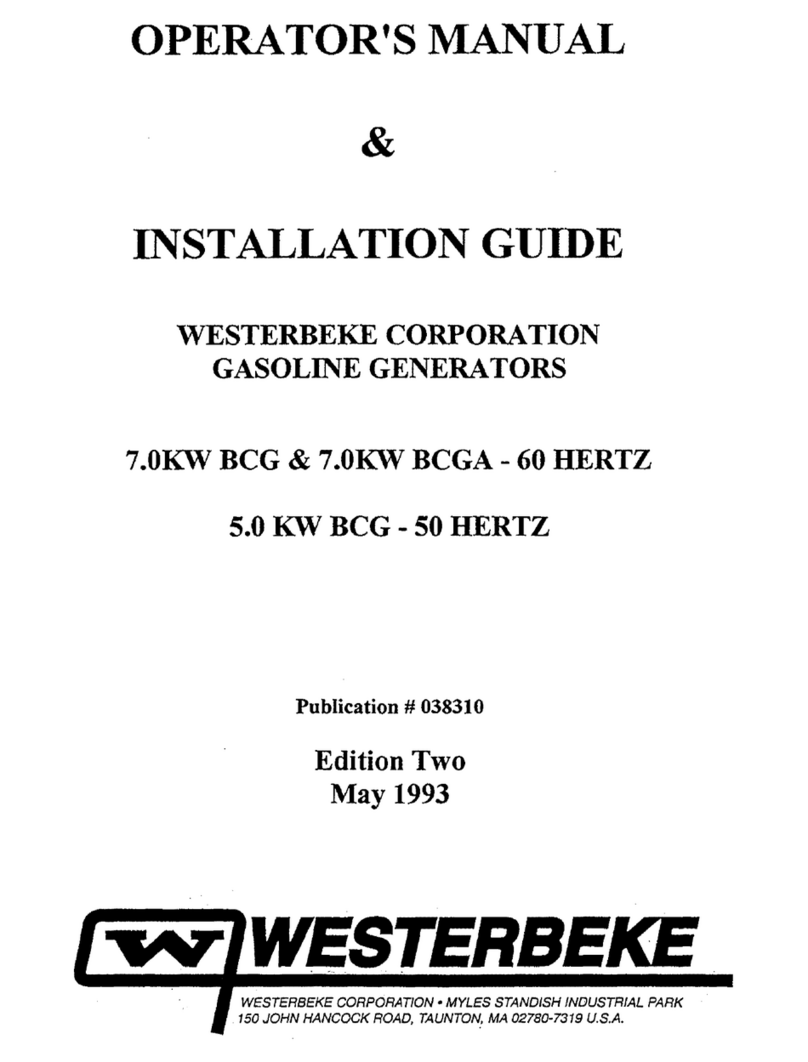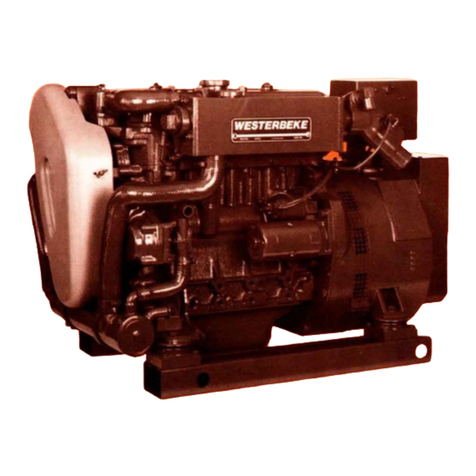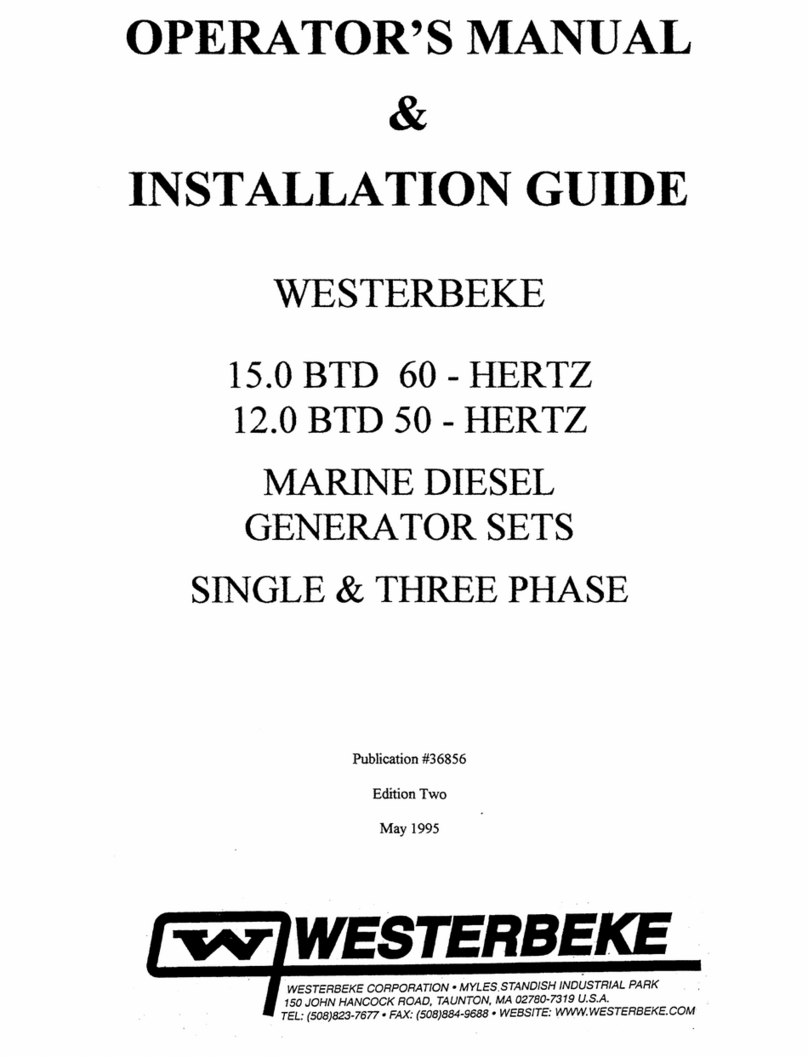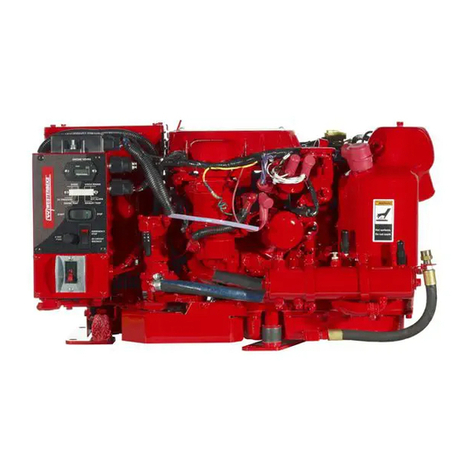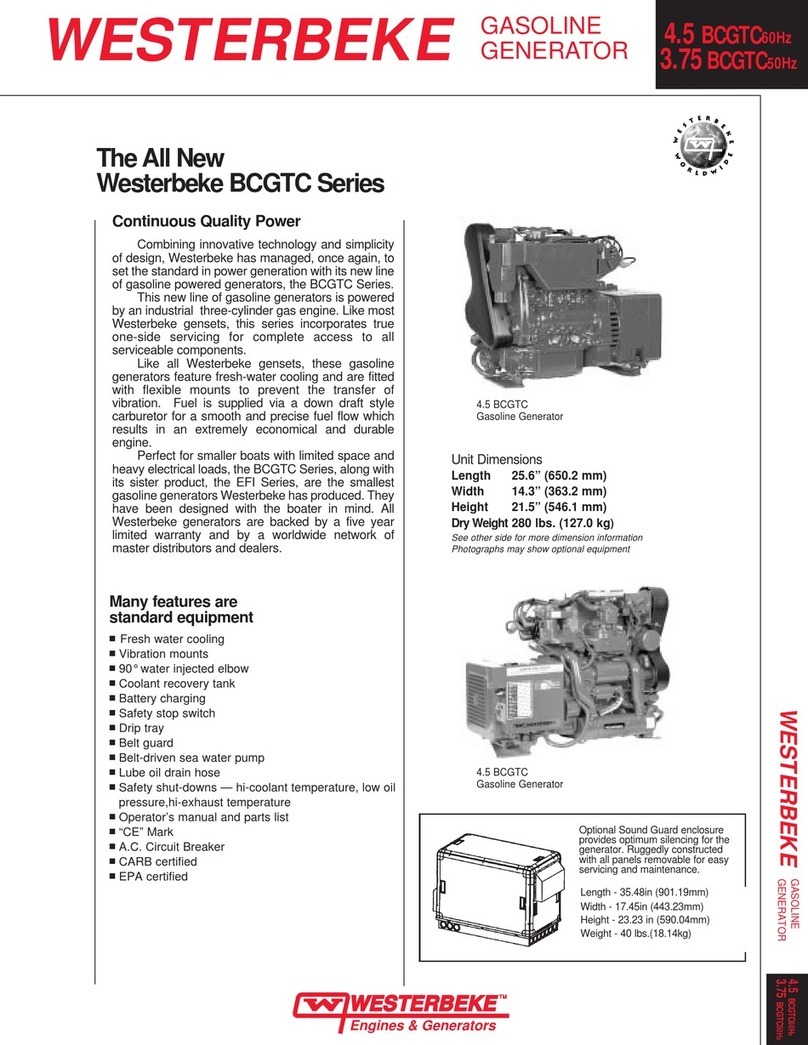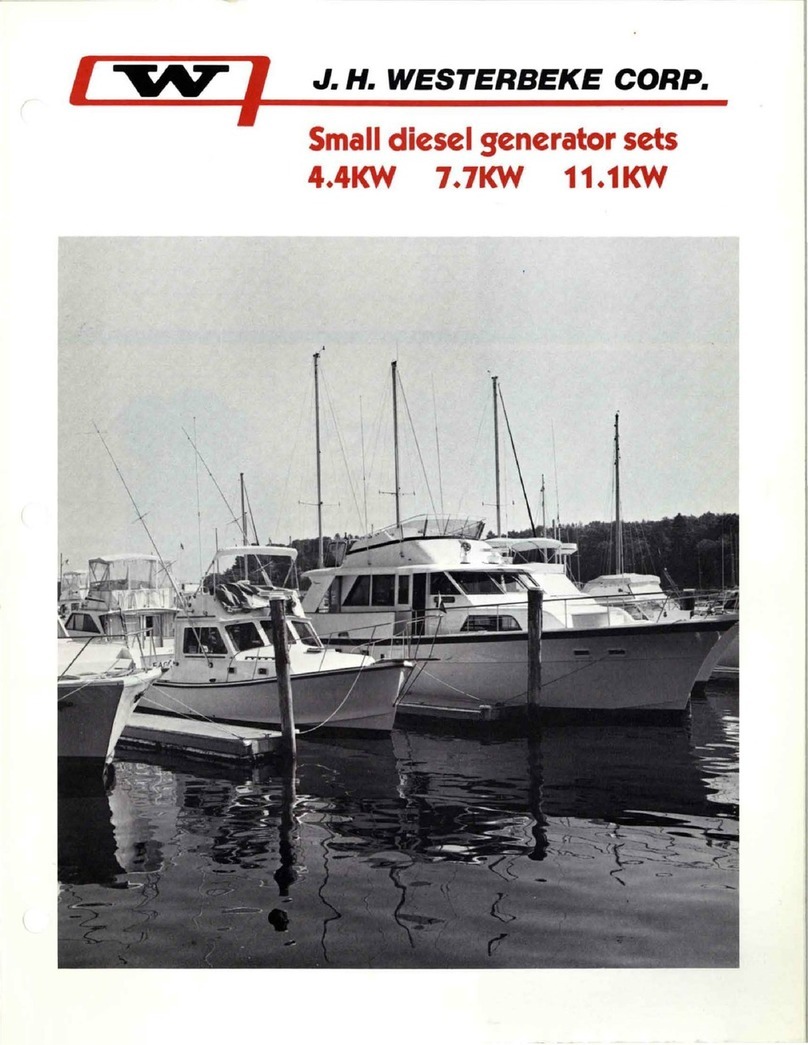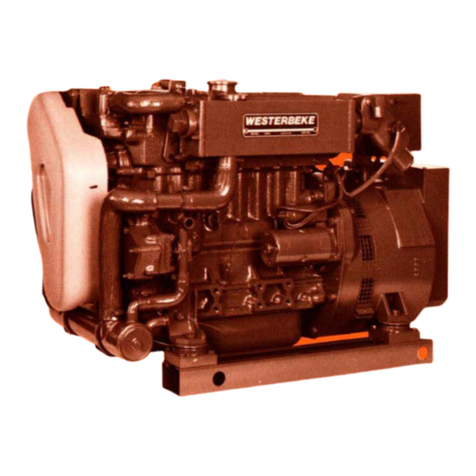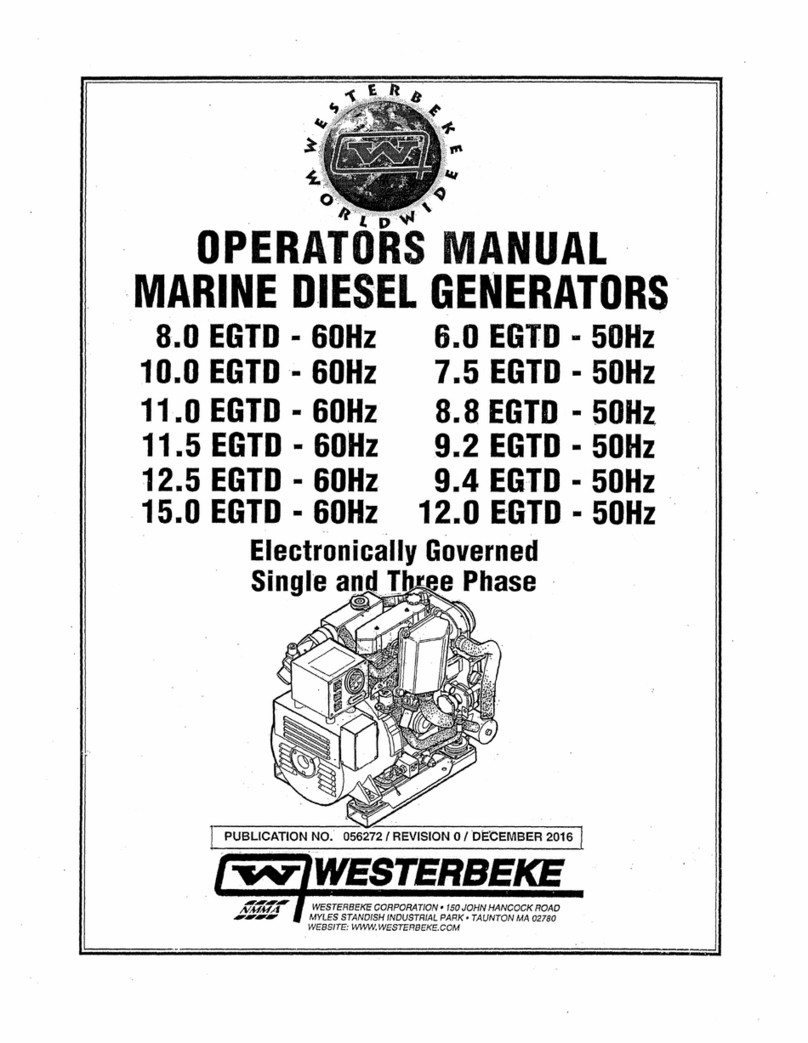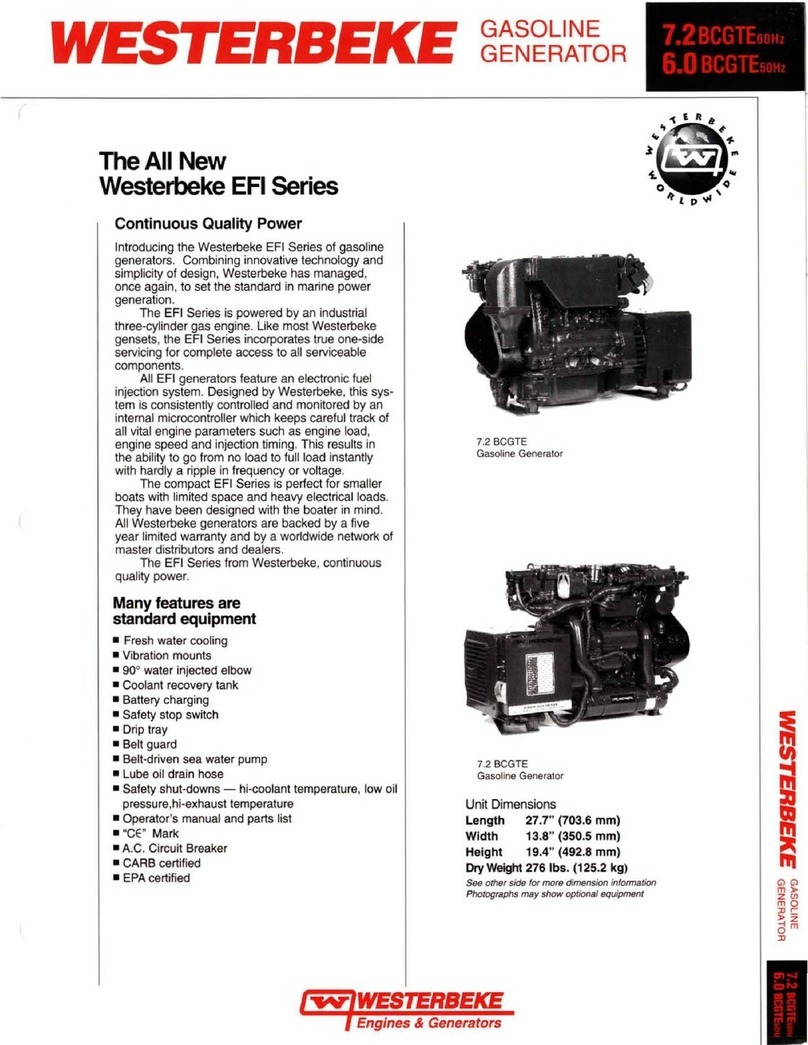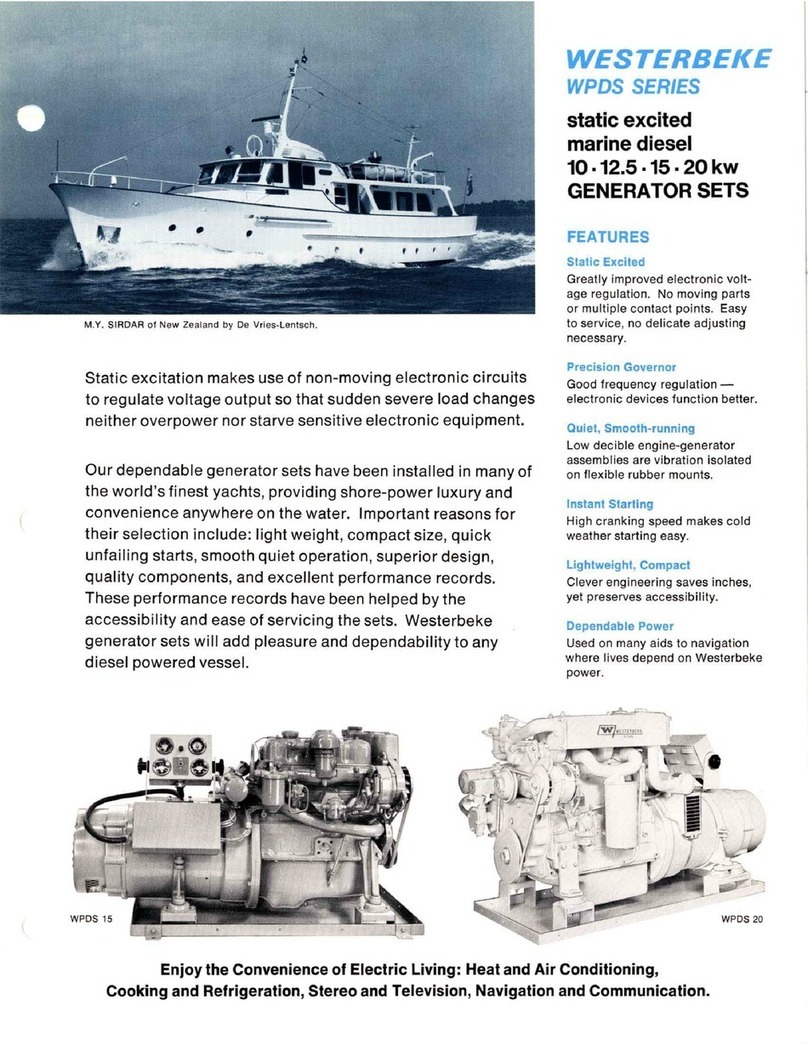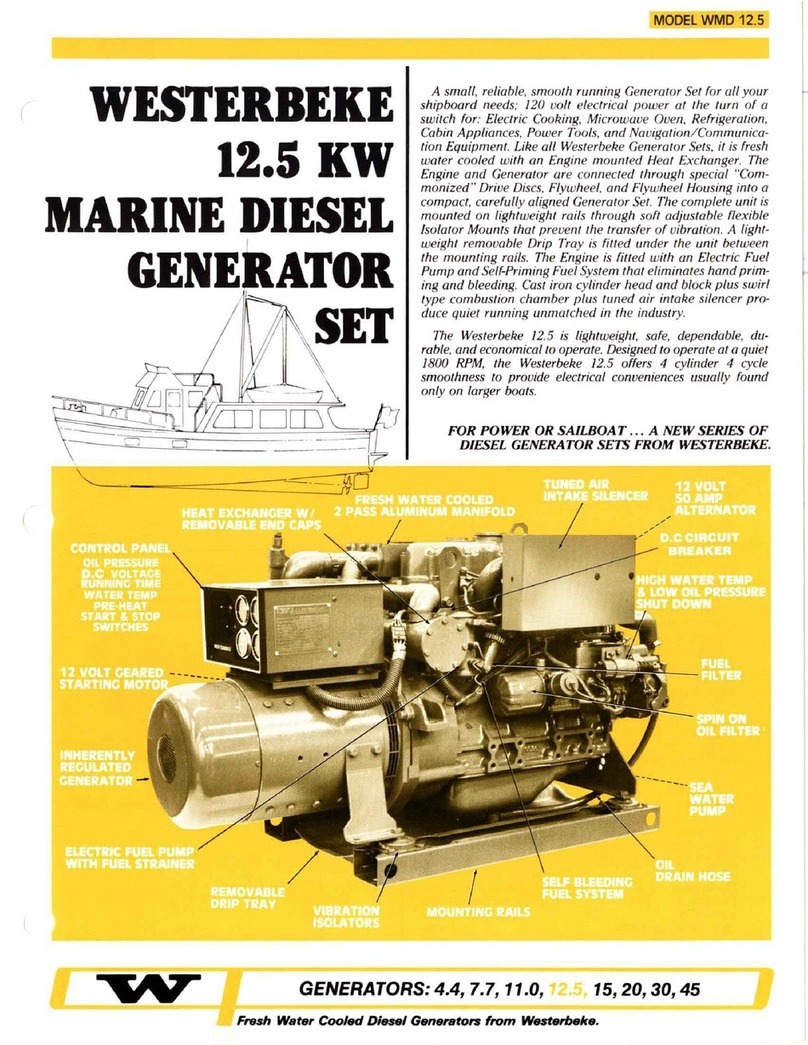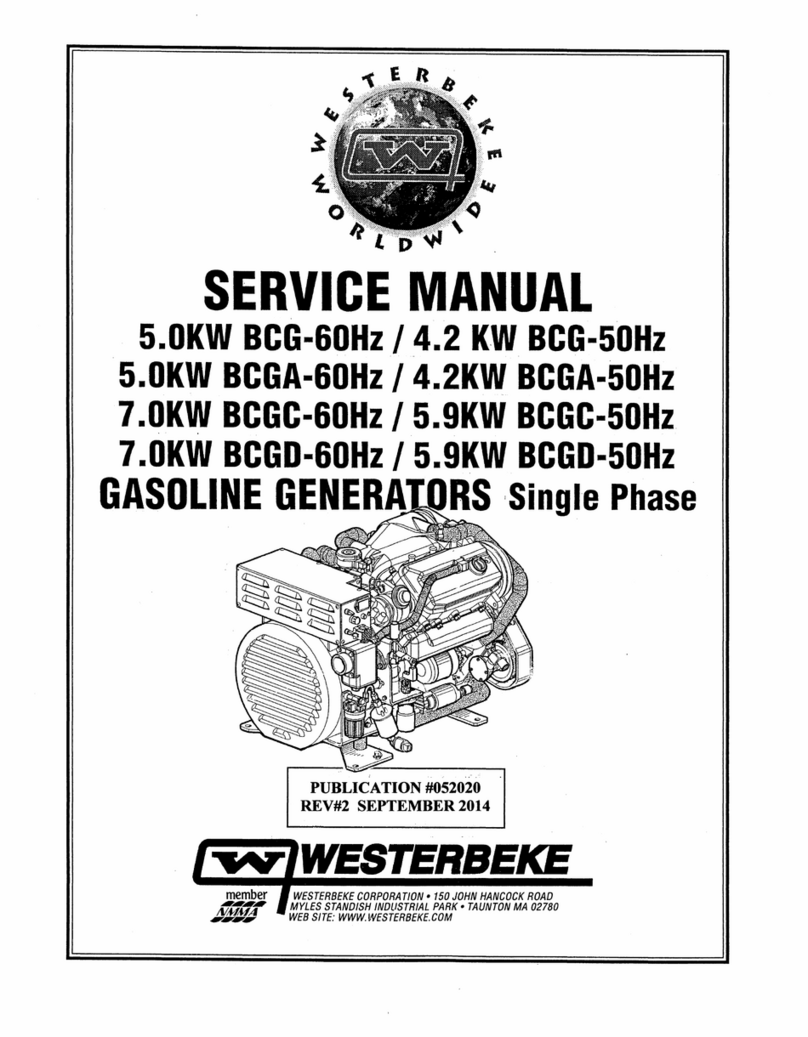
CARBON
MONOXIDE
"CO"
ISAFE-CO
GENERATORS
IMPORTANT
INFORMATION
DESCRIPTION
Carbon monoxide "CO"
is
a component
of
engine exhaust.
It
is
a colorless, tasteless, odorless, lighter than air poisonous
gas
that can kill you without
any
warning.
CO
poisoning is
one ofthe major safety risks associated with boating.
It
is
a
threat that must not
be
underestimated.
Westerbeke Safe-CO generators are designed
to
reduce
normal levels
of
CO
in the engine exhaust by approximately
99%.
Several standards
for
CO
have been published, expressed in
parts per million "ppm" and hours ofexposure:
Regulator
CO
ppm
Exposure
Hours
EPA 9 8
ACGIH
25
8
EPA
35
1
NIOSH
35
8
OSHA
50
8
ACGIH
125
0.5
NIOSH
200
0.0
NIOSH
1200
0.0
(IDLH)
1200
ppm
is
the
so-called
IDLH
concentration
-
IMMEDIATELY
DANGEROUS
TO
LIFE
AND
HEALTH.
A city
in
California characterizes the effect
of
CO
concentration
this
way:
Paris
per
Million
Responses
25
Pennissible exposure level, no
apparent
toxic symptoms.
100
No
poisoning for long period.
Allowable for several hours.
200
Shonld not be exposed above
this level for any period
of
time. A possible mild frontal
headache in two to three hours.
Even though the generator normally produces very low levels
ofCO,
an
exhaust leak ofuntreated exhaust would be
extremely dangerous. For this reason it
is
extremely impor-
tant
to
install a
CO
detector near the generator and
to
be sure
it
is
always turned on and functioning properly. Ifthis detec-
tor sounds, do not tum
it
off,
assuming it
is
a false signal.
You
can not taste, smell, or otherwise detect
CO.
Leave
the
detector on, tum off all engines
and
generators, evacuate the
boat leaving ports and hatches open,
and
seek professional
help.
As
soon
as
CO leaves
the
exhaust outlet,
the
level
is
subject
to dilution in the open
air.
The closer a person is
to
the
exhaust outlet, the higher the concentration
of
CO.
In a closed space, such
as
the engine compartment, the boat,
or underneath a stern swim platform, concentrations
will
potentially rise
to
the undiluted level emanating from
the
exhaust system due
to
a lack offresh air
to
dilute the exhaust
gas.
Therefore, one should never rely on dilution of
the
exhaust
to
provide a margin
of
safety.
Westerbeke Safe-CO generators achieve
an
approximate 99%
reduction
of
typical
CO
by
precise control control of
the
engine's air/fuel ration coupled with after treatment
in
a
special catalyst. CO emissions are not the same for every
model
because each engine is different. Also, certain
fuel
system components are commonized across several engine
models being adequate for some and extra-adequate for
others, thus producing different CO levels for different
models.
The fuel system which accomplishes the required precise
air/fuel ratio control
is
comprised
of
many different
components: purchased sub-assemblies, machined castings,
sensors, electronics
and
others. Because
of
the
extreme level
of
CO
reduction,
any
variability
in
the functioning of
any
these components can and will cause variability of
the
CO
output.
CO
concentration also varies with load. Usually, but not
always, the worst case CO concentration occurs at maximum
load.
INSPECTION
The catalyst is critical
to
optimizing CO levels. Any water
intrusion into the exhaust system will likely quickly
compromise the proper operation
of
the catalyst.
Westerbeke's exhaust system installation instructions dated
on
or after February 2004 must be adhered
to.
NOTE:
Water intrusion
is
not a product defect and is not cov-
ered under warranty. neither Westerbeke snonnal
product warranty rwr the emissions specific warranty
mandatedby various regulating authorities such as
EPA
and CARB.
Maintenance
of
any
components affecting the
flow
ofair or
the
flow
of
fuel
to
the engine
is
critically important, such
as
fuel filters and air filters (if any).
Inspection
of
the
catalyst at the prescribed intervals
is
critically important. The exhaust elbow
is
removed
by
loosening
the
metal clamp
to
provide a view
of
the output
surface ofthe catalyst. Any visual irregularity
of
the normal
flush,
honeycomb appearance
is
most likely a result ofwater
intrusion. The cause
of
the irregularity must be identified and
addressed. If there
is
irregularity,
the
catalyst and gasket must
be
replaced. Upon careful reassembly
of
the
catalyst, exhaust
elbow gasket, and exhaust elbow, check for
the
presence of
CO
while the engine
is
running. This must be performed with
a
CO
analyzer.
~
WESTERBEKE
Engines & Generators
iv
